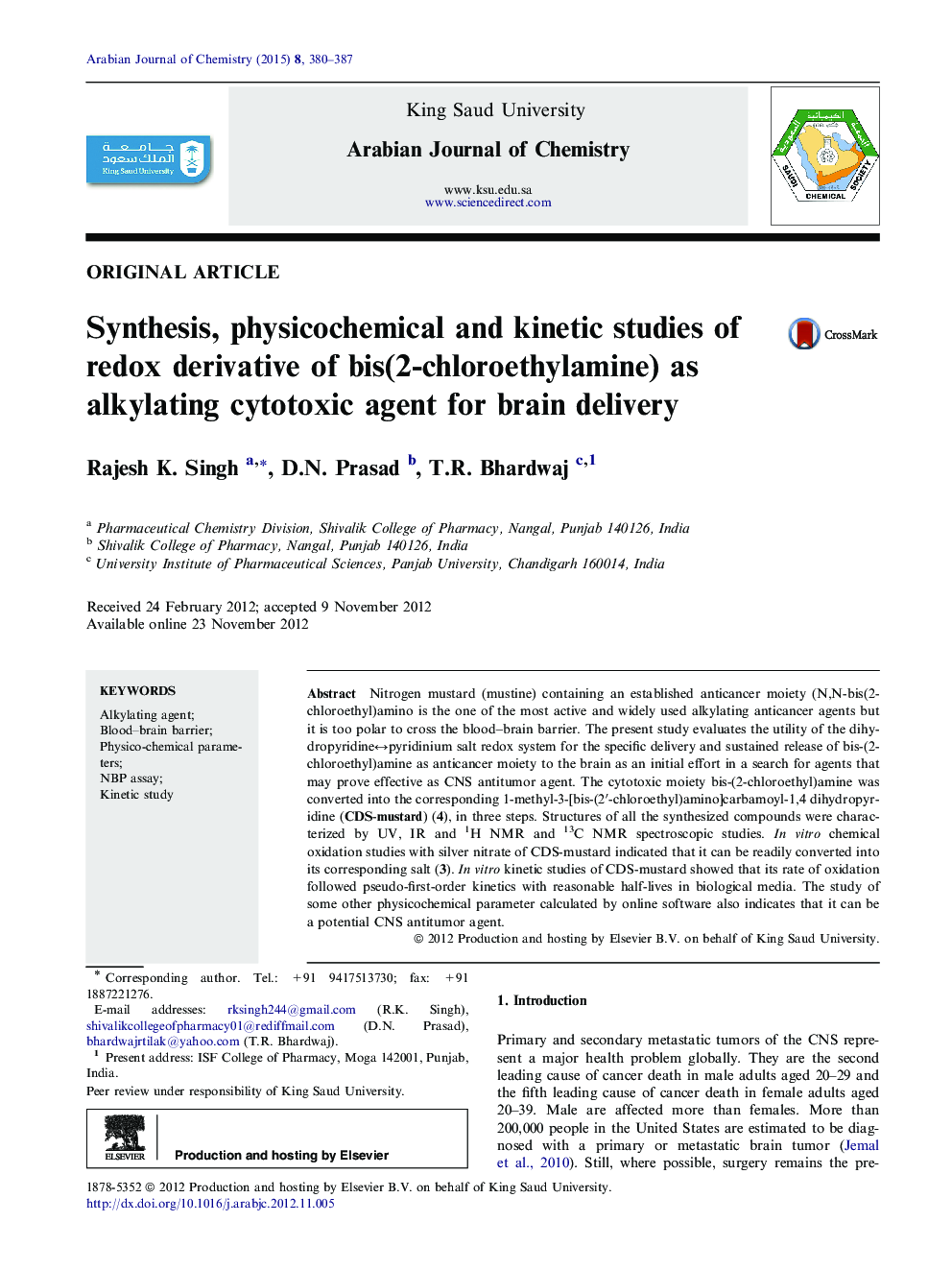| Article ID | Journal | Published Year | Pages | File Type |
|---|---|---|---|---|
| 1250670 | Arabian Journal of Chemistry | 2015 | 8 Pages |
Nitrogen mustard (mustine) containing an established anticancer moiety (N,N-bis(2-chloroethyl)amino is the one of the most active and widely used alkylating anticancer agents but it is too polar to cross the blood–brain barrier. The present study evaluates the utility of the dihydropyridine↔pyridinium salt redox system for the specific delivery and sustained release of bis-(2-chloroethyl)amine as anticancer moiety to the brain as an initial effort in a search for agents that may prove effective as CNS antitumor agent. The cytotoxic moiety bis-(2-chloroethyl)amine was converted into the corresponding 1-methyl-3-[bis-(2′-chloroethyl)amino]carbamoyl-1,4 dihydropyridine (CDS-mustard) (4), in three steps. Structures of all the synthesized compounds were characterized by UV, IR and 1H NMR and 13C NMR spectroscopic studies. In vitro chemical oxidation studies with silver nitrate of CDS-mustard indicated that it can be readily converted into its corresponding salt (3). In vitro kinetic studies of CDS-mustard showed that its rate of oxidation followed pseudo-first-order kinetics with reasonable half-lives in biological media. The study of some other physicochemical parameter calculated by online software also indicates that it can be a potential CNS antitumor agent.
